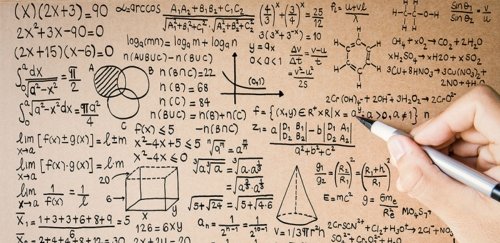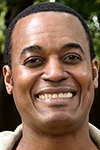Necessity Became the Mother of Invention for Math App Inventor Roberto Campusano
- News & Events
- News
- Necessity Became the Mother of Invention for Math App Inventor Roberto Campusano

“Like most discoveries in life, I stumbled upon this as I was pursuing something else,” says Roberto Campusano ’95.

Mathematician Roberto Campusano ’95 has invented an app that’s been picked up by Apple, the largest information technology company in the world. Called SciPro Math, this app is designed to replace the traditional calculator and is able to perform more than 400 mathematical operations.
“Like most discoveries in life, I stumbled upon this as I was pursuing something else,” said the mathematician. “I had conceived of this new geometrical theorem, which I had begun working on 10 years ago. I called my theorem the Law of Sci.”
“Yet a theorem only qualifies as a theorem if you can prove it,” he said. “There was not enough space on my traditional calculator to accommodate the six new operations of my theorem. Traditional calculators contain a maximum of 50 keys, which places a physical barrier on the amount of mathematical operations you can perform.”
To solve the problem and to prove his theorem, Campusano enrolled in a three-year, online, computer programming course at Stanford University. Two years later, SciPro Math was born, an app designed to be used by both professionals and students.
SciPro Math overcomes the computational space barrier of traditional calculators through a system Campusano created called “coordinated function keys.” Four function keys, located in the control section of the calculator, allow the user to navigate through 16 different operational screens. This way, the calculator can perform a motherload of mathematical operations: arithmetic, geometry, trigonometry, algebra I and II, pre-calculus, probability, finance, unit conversions and the list goes on. Calculations can be stored on the app, which takes up only 8.8 MB of memory space.
What’s more, Campusano’s Law of Sci, which has more than 200 new geometry formulas, is included on the app. The Law of Sci can be found on screen number two, right next to the Pythagorean theorem.
The fact that Apple immediately picked up on this app was the break Campusano had been waiting for. He is a registered inventor of Chess of the Americas patent #6,098,982 and was a member of RIC's student Chess Club. The team won third in the country in the 1993 PanAmerican Intercollegiate Tournament, beating out Harvard. Campusano also has 30 other inventions in the works.
In many ways, the history of technology is a story of brilliant inventions and inventors like Campusano. Yet Campusano believes that intelligence is available to everyone and is ultimately benign.
“Most of my inventions originated in the state between waking and sleeping,” he said. “In that state, you withdraw the hindrance of trying to capture an idea in your mind and simply allow ideas to flow. Once I have an idea, I go out and test it and it works.”
Ultimately, he wants to invent things that change the way people think and live. “It’s one thing to have access to technology,” he said, “but it’s another to be the person who invents and programs the way people entertain themselves or communicate with each other in the future. I want to be a part of that.”
A native of the Dominican Republic, Campusano came to the United States at age 19 on an I-20 international student visa. He attended CCRI for two years, graduating with honors, before transferring to RIC, where he earned a B.A. in mathematics. Campusano worked for four years substitute teaching at local high schools before returning to his country, where he taught math for another five years. Campusano currently resides in the Dominican Republic, where he continues to invent and program.
